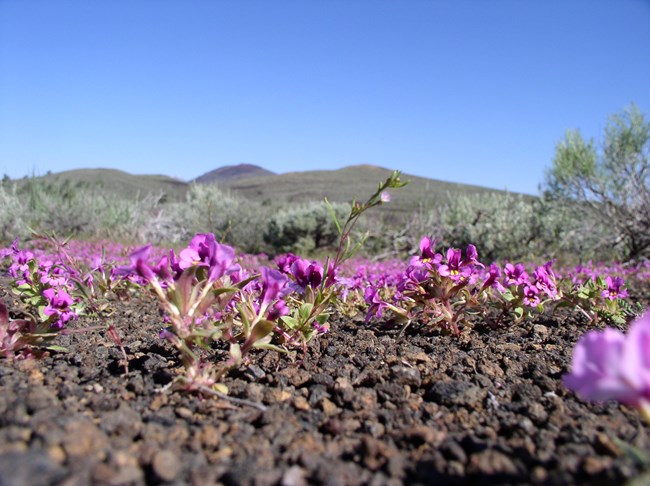
NPS Photo Despite the seemingly barren nature of the cinder cones and lava fields, spectacular floral displays occur at Craters of the Moon each spring. Peak bloom for spring wildflowers generally occurs in early to mid-June. Starting with the arrival of the wild onion in late April and ending with the disappearance of the yellow blossoms of the rabbitbrush in September, a variety of wildflowers can be found blooming within the park's boundaries. The ability to grow in this harsh environment means overcoming a lack of moisture, meager soil, and surface temperatures that exceed 150°F. Many of the unusual characteristics of the wildflowers are adaptations for survival in this extreme environment. Common WildflowersPlants can have multiple common names which can also vary from region to region. Scientific names and families can also change as time goes on and more is learned about a plant or group of plants. Below are some of the most common flowering plants seen in the park.
Select a Park:Select a Species Category (optional):
Search results will be displayed here.
| |||||||||||||||||||||||||||||||||||||||||||||||||||||||||||||||||||||||||||||||||||||||||||||||||||||||||||||||||||||||||||||||||||||||||||||||||||||||||||||||||||||||||||||||||||||||||||||||||||
Last updated: March 24, 2024
